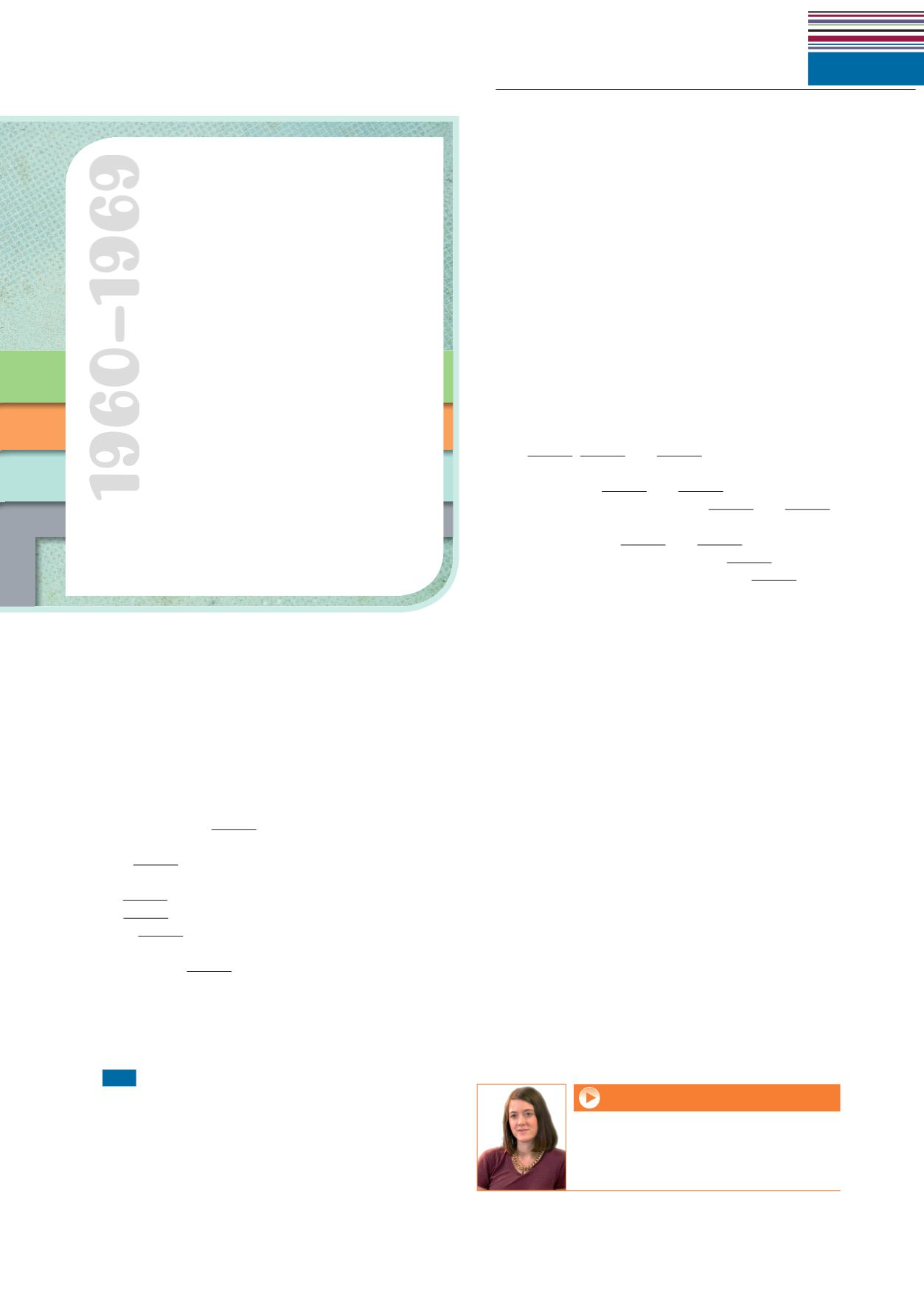
1960–1969
DESIGN THROUGH THE AGES
7.2
69
VOCABULARY
ABSTRACT NOUNS
5
a
Find the noun forms of the verbs below in the texts.
1
advertise
4
recycle
2
consume
5
communicate
3
industrialise
6
streamline
5
b
Complete the questions below with the nouns
from Exercise 5a.
1
Is there enough
of harmful products like
batteries?
2
Do
and curved shapes make products look
more stylish?
3
Is
the best way to get people to buy products?
4
Is
leading to people becoming more selfish?
5
Has
damaged the Earth so much that it
cannot recover?
6
Does better
technology lead to better lives?
5
c
Work with a partner and ask and answer the
questions above.
LISTENING
6
7.2
Listen to two designers talking about ideas for
a new product and answer the questions.
1
What product do they discuss?
2
Who will use the product?
3
What materials do they mention?
4
When do they want to launch the product?
GRAMMAR
MODALS (NECESSITY AND OBLIGATION)
7
Underline the modal verbs in these sentences. Then
use the verbs to complete the statements below.
1
We need to reach as many people as possible.
2
We can’t use steel.
3
We should make it in just three colours.
4
It must be cheap if we want to be competitive.
5
It doesn’t have to be very different.
6
The rules say it has to be strong enough to support a
heavy person.
7
We don’t need to rush.
8
We really mustn’t miss this opportunity.
9
We shouldn’t launch it until we’re really ready.
10
I can do some designs before we meet again.
To talk about:
a
things that are important and necessary to do we
use
,
and
.
b
things that are not essential (i.e. where you have a
choice) we use
and
.
c
rules and regulations we often use
and
.
d
when it is necessary and important
not
to do
something we use
and
.
e
something that is advisable we use
.
f
something that is not advisable we use
.
Ê
Language reference and extra practice, pages 138–139
8
Choose the correct modal verb.
1
This material
doesn’t have to / mustn’t
be used as it
harms people’s health.
2
In some countries you
don’t need to / can’t
show
certain images in your designs.
3
There’s a problem with the design, but it
doesn’t
have to / shouldn’t
take us much time to resolve.
We
have to / should
finish it today!
4
We
shouldn’t / have to
change the shape of the
model so that it meets government regulations.
5
We
don’t need to / must
hire that designer. She’s the
best in the business.
6
It’s not breaking any regulations, but I think we
should / have to
change the design.
SPEAKING
9
Work in groups. You are going to design a product.
1
Choose one of these products: a chair, a table,
a kettle, a toothbrush, a coffee machine.
2
Decide which group of consumers you are aiming
at, e.g. older people, young adults, children, etc.
3
Discuss your ideas and sketch a design. Think about
shape, colour, materials, size, appearance, rules and
regulations. Try to use modal verbs.
MEET THE EXPERT
Watch an interview with Freyja Sewell,
a furniture and product designer, about
her designs.
Turn to page 152 for video activities.
THE SIXTIES
were a time of great hope and
confidence. For the first time people could
travel faster than the speed of sound and
astronauts could fly to the Moon. At this
time there was also a great increase in the
the buying and selling of new products
as television advertising led to mass
consumerism.
Manufacturers started to create new
products for young people as they began
to understand the purchasing power of
teenagers. However, many young consumers
didn’t want products that lasted a lifetime.
Instead, they wanted products that they
could throw away when they were no longer
needed. But most of all, young people
wanted a wide variety of products to choose
from, so designers found new materials and
new styles to attract them.
This period was also called the ‘space age’
and it inspired furniture designers to use
bold, futuristic shapes, such as the amazing
Ball Chair by Eero Aarnio. Clothes designers
also worked with new kinds of materials,
such as Pierre Cardin’s silver and plastic
dresses.


